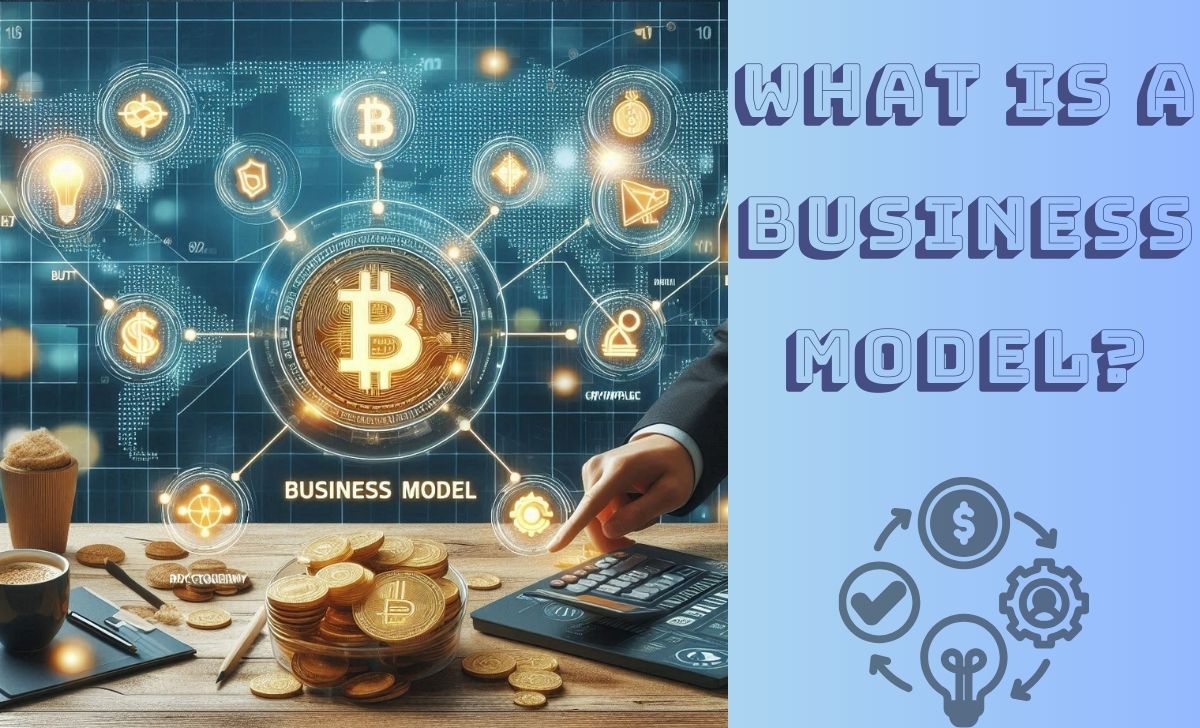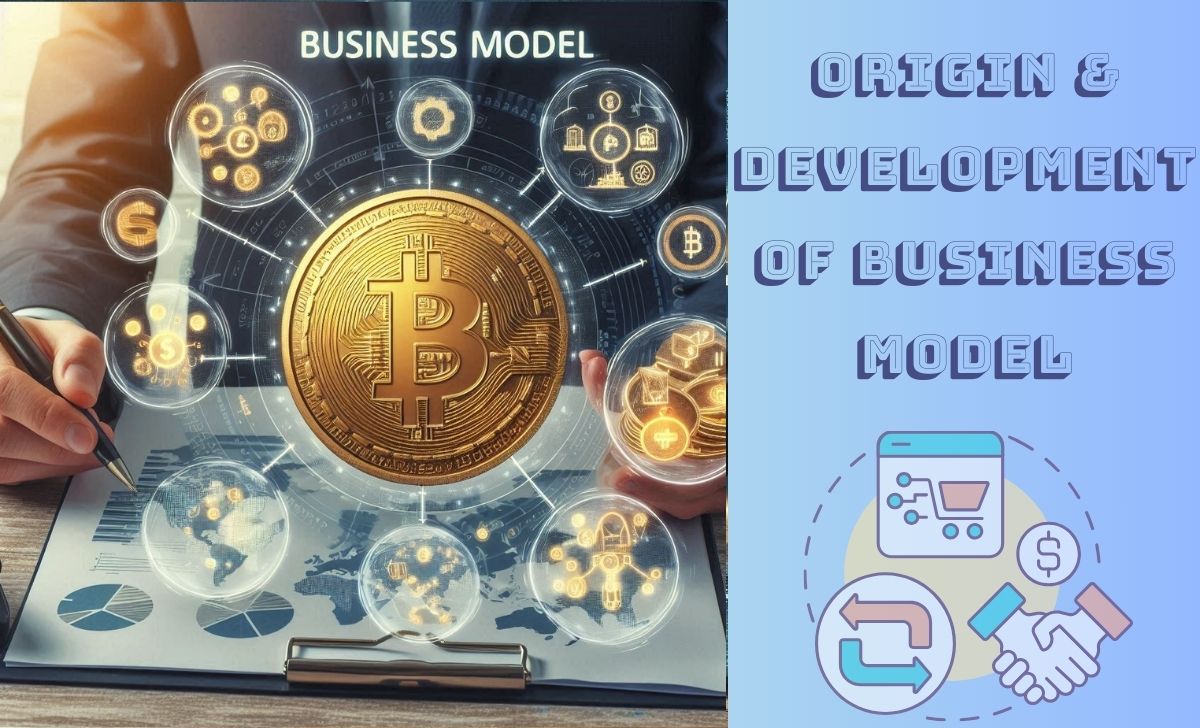Business Model is one of the important terms in business, especially in the digital economy era. Isn’t just a business plan but also a detailed blueprint of how a business creates value, attracts customers and achieves profits.
Therefore, the following article of AZCoin will help you better understand the business model, how it works and its importance to the success of a business.
What is a Business Model?

Business Model is a concept that describes how a company creates, delivers and captures value from its products or services.
The main goal of a Business Model is to clearly define how the business will make money, including identifying the target customer, the method of delivering the product or service and the cost factors involved. By establishing an effective Business Model, a business can optimize operations, increase competitiveness and achieve financial sustainability.
Origin and development of Business Model

The term business model only became popular in the late 90s, in connection with the fall in prices in the IT and telecommunications industries. This development is related to Transaction Cost Economics (TCE). As information processing, storage and sharing became cheaper, many new ways of working became possible.
Value chains were disrupted and restructured, leading to globalization and increased competition. This created a variety of new business models. Among these were many innovative upstarts that leveraged emerging technologies and new market opportunities.
Types of Business Models

Business models are not a one-size-fits-all concept. Each company employs different methods to generate revenue. Below are some common types of business models:
Retail Model
The retail model is one of the most common business models encountered daily. Retailers are the final entities in the supply chain; they typically purchase finished goods from manufacturers or distributors and sell them directly to consumers. This model also extends to sectors like personal loans, where companies may offer a variety of financial products directly to consumers.
Manufacturing Model
Manufacturers are responsible for sourcing raw materials and producing finished products using labor, machinery and in-house equipment. They can produce custom or mass-produced goods and sell these products to distributors, retailers or directly to customers.
Fee-for-Service Model
Instead of selling products, fee-for-service models focus on providing services and labor. This model may charge by the hour or a fixed fee for a specific arrangement. These companies are often specialized, offering expertise that is not universally available or requires special training. Financial advisory services, including those related to education loans, frequently use this model to offer personalized advice and solutions.
Subscription Model
The subscription model aims to attract customers with the hope of converting them into long-term loyal users. This is achieved by offering a product that requires regular payments, typically to access benefits over a fixed period. While primarily offered by digital companies for software access, the subscription model is also popular for physical goods, such as monthly produce boxes.
Freemium Model
The freemium model attracts customers by offering basic, limited products for free. As customers use the service, the company tries to convert them to a premium product that requires payment. Although customers might remain on the freemium version indefinitely, the company aims to showcase the benefits of becoming a premium member.
Bundling Model
If a company is concerned about the cost of acquiring a single customer, it might bundle products to sell multiple items to one customer. The bundling model leverages existing customers by attempting to sell them additional products. Discounts for purchasing multiple products can incentivize this.
Marketplace Model
Marketplaces are compensated for providing a platform for transactions. While transactions can occur without the marketplace, this business model aims to make trading easier, safer and faster.
Affiliate Model
The affiliate model is based on promoting and leveraging the reach of specific platforms or individuals. Companies pay an entity to promote their goods and that entity typically receives compensation in return. Compensation may be a fixed payment, a percentage of sales from their promotion or both. Example: Social media influencers like Lele Pons, Zach King or Chiara Ferragni
Razor Blade Model
Named after the product that created the model, it aims to sell a durable product at a low price to then generate high revenue from selling disposable components needed to use that product. Also known as the “razor-and-blades” model, razor companies may give away expensive razor handles with the premise that consumers will need to purchase razor blades regularly.
How to create a professional Business Model

Below are some basic steps to building a professional plan:
Identify your audience
Most business model plans start with identifying the problem or target audience. A strong business model will reflect who you want to target so you can create the right product, message and approach.
Identify the problem
In addition to understanding your audience, you must know the problem you are trying to solve. A hardware company sells products for home improvement. A restaurant provides food to the community. Without a problem or need that creates a need for your service or product, your business may struggle to find a foothold.
Understand your products/services
With your audience and problem in mind, consider what you can offer. What products do you want to sell and how does your expertise fit into that? At this stage of the business model, the product is tailored to the needs of the market and what you can offer.
Document needs
With your product selected, consider the obstacles your business will face. This includes product-specific challenges as well as operational difficulties. Be sure to document each need to assess whether you are ready to launch in the future.
Find key partners
Most businesses will rely on partners to be successful. For example, a wedding planner may establish relationships with venues, caterers, florists and tailors.
Establish a profitable solution
A business model is not complete without defining how the business will make money and generate profits. This includes choosing the strategy or strategies outlined in the types of business models section above.
Test your model
Once your plan is complete, conduct a soft launch or pilot survey. Ask people how they feel about paying for your service and offer discounts to new customers for comments and feedback.
For those interested in the latest developments in the business world, especially in the cryptocurrency sector, consider checking out AZcoin – the best crypto exchange of 2024.
Conclusion
Hopefully the above article has helped you better understand business models and how they work. Understanding and building an effective business model is an important factor in developing and maintaining a successful business in today’s competitive environment.

I’m Jessi Lee, currently living in Singapore. I am currently working as a trader for AZCoin company, with 5 years of experience in the cryptocurrency market, I hope to bring you useful information and knowledge about virtual currency investment.
Email: [email protected]











